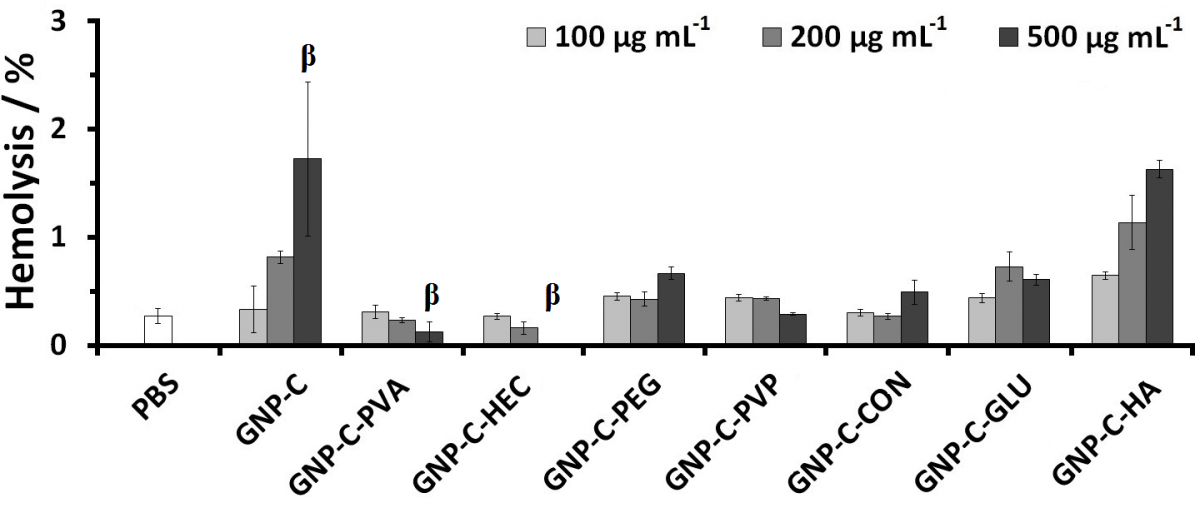RECENT PUBLICATIONS: Polymer surface adsorption as a strategy to improve the biocompatibility of graphene nanoplatelets
INEB researchers recently published an article in the journal Colloids and Surfaces B: Biointerfaces, available since October 1st 2016. The article is entitled "Polymer surface adsorption as a strategy to improve the biocompatibility of graphene nanoplatelets" and is authored by Artur M Pinto, J Agostinho Moreira, Fernão D Magalhães and Inês C Gonçalves.

The biointeractions of graphene-based materials depend on their physico-chemical properties. These properties can be manipulated by polymer adsorption. Graphene nanoplatelets (GNP-C) were modified with PVA, HEC, PEG, PVP, chondroitin, glucosamine, and hyaluronic acid. Biocompatibility evaluation showed that all these materials induced low haemolysis (<1.7%) at concentrations up to 500 μg/mL. GNP-C-PVA and GNP-C-HEC presented the lowest haemolysis percentages and were therefore more thoroughly studied. The morphology of HFF-1 cells was investigated by microscopy (optical, fluorescence, TEM) to evaluate interactions with GNP materials. Small GNP-C nanoplatelets were observed to enter cells independently of the surface treatment. Modification of nanoplatelets with HEC resulted in no benefit in terms of biocompatibility, whereas PVA considerably improved the biocompatibility.

Figure 1
Percentage of RBCs lysis after 3 h incubation at 37 °C with PBS (negative control) and different concentrations of GBMs (100, 200 and 500 μg/mL). The positive control (Triton 1% in PBS) resulted in 100% haemolysis (data not shown). The results are presented as the mean and standard deviation (n = 3). Greek symbols represent statistically significant differences between samples within the same concentration (p < 0.05).


